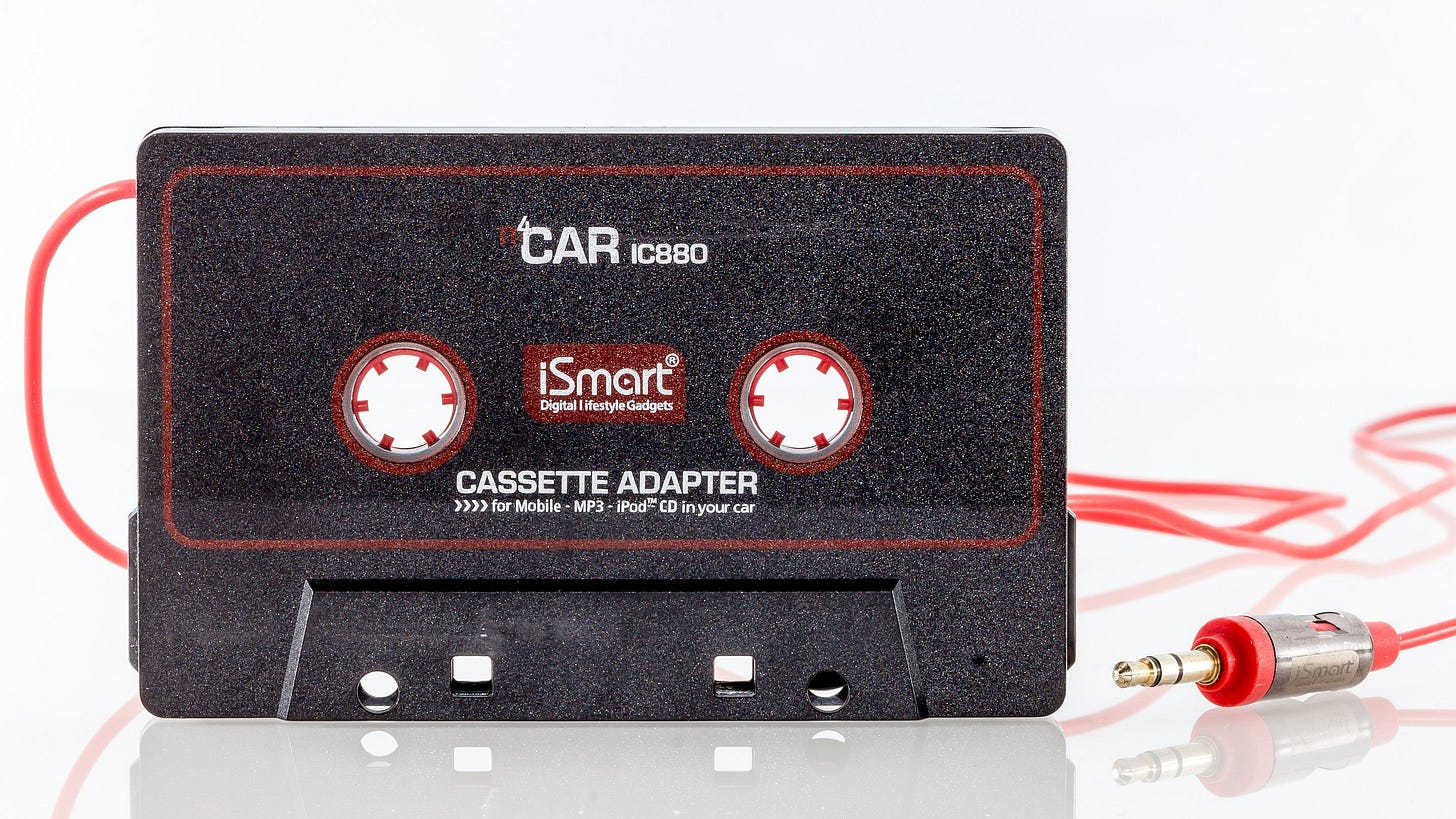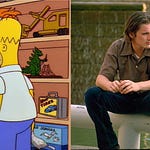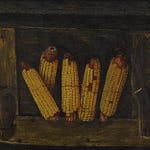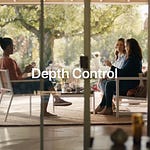When I first got an iPod, I collected ways of listening to it through something other than headphones. This was before the era of the aux cable or Bluetooth. In the car, the best way of getting sound from my pocket to the speakers was a cassette-shaped device that went into the tape deck and connected through a spindly cable to an iPod (or Discman) headphone jack. This worked until it didn’t. The two most common points of failure were poor construction and incompatibility with certain auto-reverse tape decks.
I also had a couple small transmitters that plugged into my iPod and broadcast whatever it was playing to an FM frequency. The range was about four feet and the scheme worked great until I drove into an area where an actual radio station overpowered it.
This is the awkward phase of the early adopter. The rest of the world hadn’t caught up to my way of storing and playing music. I used these workarounds even through my first couple years of owning an iPhone. I put them away when I bought a car that had an auxiliary jack built into the stereo.1 The world caught up. Soon, there was nothing stopping me from hearing whatever I wanted whenever I wanted however I wanted.
And this caused problems.
One lazy Saturday in my tape adapter days (that is, college) a friend and I decided to figure out where the main road that cut through campus ended. This meant a drive of unknown duration westward through St. Louis County and beyond. I had my iPod and FM transmitter in the pocket of my jean jacket, but my friend insisted we stick with CDs. In our first mile, he put in Bossanova, the third Pixies album, which was then at least 15-years-old. “I never could get into this one,” I said, offering again to put on something newer from my iPod.
“Well you never had to get into it,” my friend said. He then gave me a lecture on the problems of my generation, a talk that seemed ironic given he was just seventeen months older than me. I’d had an iPod for a few years by that point, while he’d stuck with the tapes and CDs he grew up with. This, he said, made our tastes dramatically different. He couldn’t listen to whatever he wanted whenever he wanted. He didn’t even have a track advance button until he got a CD player, and even then, all he could do was skip around on the same album.
He had a point. I was barely familiar with most of the songs I heard in the car, even though I owned the album myself. My opinion of Bossanova was based on the fact that very few songs from the album made it on my Pixies playlist. I thought of this playlist as my own version of the band’s greatest hits. In reality, it was their actual greatest hits. The only differences between my playlist and the 1997 best-of compilation Death to the Pixies were track order and my replacement of the song “Dig for Fire” with “Alec Eiffel.” There was nothing unique about my picks, but I had convinced myself they were special because I had made them. In reality, my choices were the same as the band’s, the record label’s, or whatever group of people was tasked with putting together Death to the Pixies. In an age of infinite personalization, I was in a mind meld with a business.
I realize here that I’m close to sounding like one of the old rock heads who complains about singles and who gripes that nobody puts together real records anymore. But that’s not my point. I like making playlists. And I’m not saying the album is the best or most authentic way of organizing music. Even the most cohesive concept albums have songs that work on their own (the entire classic rock radio format is built on this fact). I’m not arguing that the skip button, combined with the playlist, was the beginning of the end of the album. I’m saying it was the beginning of the end of the song.
Today, it’s high praise to describe an album with the term “no skips.” Skip, of course, refers to pressing the track advance button, but it’s also a label for any songs we don’t want to hear—what people in the CD era called “filler.”2 This label and the technology for skipping developed at the same time. Before track advance buttons, skipping meant guesswork—lifting the arm of a record player or haphazardly fast-forwarding a tape. The skip button is a tool for moving through time precisely and instantly. The playlist, meanwhile, is a tool for moving through space—avoiding any songs we label skips.
But it doesn’t stop there. On playlists I compiled, I sometimes pressed the track advance button in the middle of songs. I jumped between verses and instrumental breaks that I felt like listening to at the time. I was turning parts of songs into skips.
Like with the act of making a playlist, I thought of my skipping as customization and curation. That day in the car as we listened to Bossanova, I saw it as a lack of willpower, or a problem with focus. Was I so desperate for pleasure that I couldn’t wait a couple minutes until a song finished? And what was I missing out on when I skipped out of a song early? I’ve written before about how access to all music digitally narrowed my listening—now the ability to rearrange and skip was making my listening shallower. Sure, parts of songs made me feel something, but short moments can only provoke feelings. Full songs earn them. Provoked feelings are intense; they come on instantly and fade just as fast. Earned feelings build slowly and stay with us. The difference here is the difference between a kiss and a relationship. It’s the difference between a single joke and an entire comedy, a well-chosen word and a finely crafted sentence, between a good day and a great month.
Sometimes a song needs more time than it lasts for to earn those feelings—it needs repeat listens. When I think about this, I think about the Pixies again, but not Bossanova. Instead, I’m reminded of something frontman Frank Black said in a documentary on the band They Might Be Giants3. Black says he wasn’t that into the band’s breakthrough album Flood when he first heard it, but the tape was in his car and it grew on him. This, he said, is the case with a lot of his favorite records. He formed a relationship over time. He gave it a chance. Several chances.
When art, technology, and commerce combine, friction is the first thing to go. There will always be someone—maybe with an algorithm—who will sell you whatever art you want without anything that challenges you. And they’ll tell you this is good, so maybe you’ll buy more.
Around the turn of the century, Hasbro, a conglomerate better known for board games and action figures than music, released HitClips, a low-fidelity music format stored on plastic squares the size of a stack of postage stamps. Each HitClip played a one-minute moment of a popular song through a specialized player. (When not in use, HitClips could be clipped to your clothes to show off what kind of music you liked.) Today HitClips are a punchline. But Hasbro moved 20 million of the things by 2002.
Earlier this year, a handful of artists spoke out about the pressure they were under to produce hits for TikTok. These hits are built on moments, not entire songs. Hooks over compositions. Hooks that catch listeners who then post them under their own profile.
Making skippable tracks was like splitting the atom into protons and electrons. Now we’re dealing in quarks. Quarks make money.
This is the march of time, moving out of the awkward stage of early adoption into a world that’s built around that adoption. Everything else will catch up. Car manufacturers replace tape decks with aux jacks. But there is a line between adoption and acquiescence. Just because something is a certain way doesn’t mean we have to resign ourselves to everything being that way. We can still discern between convenience and quality and we can choose the latter.
This sounds like work, but it doesn’t have to be. There’s a reward waiting. We can let a song play. We can read an article (or a newsletter) without scrolling to see how many paragraphs are left. We can ignore the bullet points and business-speak brevity and let ourselves drift someplace unfamiliar, confident that we’ll figure out where we are eventually—by the end of the song or by the start of the next chapter. Maybe we’ll want to go back there again.
Bossanova ended before the road did. I think so, anyway. We got lost in a series of construction detours. By the time the CD player turned back to track one, we were debating whether to head home. We didn’t solve any mysteries on our drive, and it took more time than we thought it would. But nobody got hurt and we saw a part of the county we never would have had we stuck to the places we knew.
Even though this was 2010, there was still an air of audio-visual-club nerdery around the phrase “auxiliary port.” Aux was a wonky term. It was the channel you put the TV on to play video games or the catchall dial setting on the home stereo next to “phono” “cass” and “tuner.” This kind of low-level technical knowledge has become obsolete in daily life. Even the process of Bluetooth pairing has become simple enough for the latest adopter among us to manage.
These are also “album cuts” but that term doesn’t carry any qualitative definition on its own. It just means the song wasn’t a single. It can be used derisively (as in, “this sounds like a Whitesnake album cut”) or as a term of affection. A person who likes album cuts is a person whose taste is refined beyond that of the committee choosing which tracks to attempt to turn into radio hits.
Yes, this is the second reference to this movie I’ve made in the last few months. There’s a lot of thoughtful commentary in it about how we find, make, and connect to music.
















